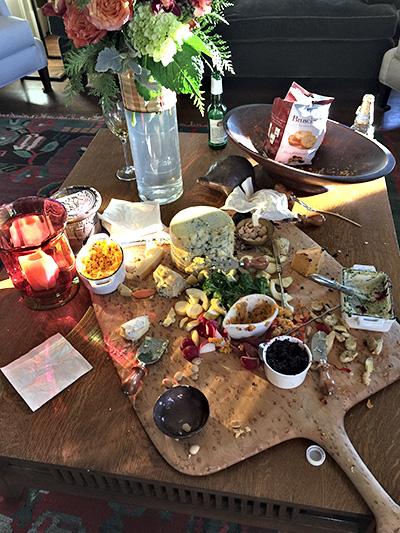Seasons by the Sea: After the Snipes

Once upon a time in medieval England, a Christmas dinner “pie” was created consisting of two bushels of flour, 20 pounds of butter, four geese, two rabbits, four wild ducks, two woodcocks, six snipes, four partridges, two neats’ tongues, two curlews, six pigeons, and seven blackbirds. Now I’m sure you’re wondering, first of all, what is a snipe, a neat’s tongue, and a curlew? They are shorebird, beef tongue, and shorebird again. I imagine that those two breeds of shorebird, existing on a diet of fish, added a dash of mystery and umami to that monstrous pie. And what the heck did they do with the leftovers?!
According to numerous sources, we consume over 7,000 calories on Christmas Day, three times what we should. In England, no surprise, folks are known to consume over 8,000 calories. With a full English breakfast, pints of ale, mincemeat pie, eggnog, and all the other rich dishes that are a part of that day, I suppose this is possible — and appalling.
Americans eat 22 million turkeys on Christmas Day and 318 million pounds of ham. During the 17th and 18th centuries venison was considered a good option for this holiday meal, but you had to hunt for it. There was always plenty of pork, so that wasn’t special occasion-y enough. Turkeys hatched in spring would be nice and fat and ready for slaughter by Christmas. Before turkey was introduced to England around 1540, swans, geese, and peacock were popular. But swans tasted fishy and, for the life of me, I have not been able to find reliable source on what peacock tastes like. I’ll go with tough, stringy, gamey, dark meat chicken.
Charles Dickens’s “A Christmas Carol” cemented turkey as the centerpiece of a holiday meal, available to rich and poor alike. Around the 20th century, according to “America’s Founding Food: The Story of New England Cooking,” turkey remained popular for Thanksgiving, but the wealthy turned to more exciting and expensive fare like game meats and beef.
How did ham become the star of some people’s Christmas meal? Apparently, its roots are in ancient pagan ritual. A wild boar was the chosen sacrifice to Norse god Freyr, associated with harvest and um, ahem, phallic fertility. When pagans were converted to Christianity, the meal became linked to St. Stephen, whose feast day is Dec. 26. This may be a bunch of hooey, but it makes for a good story.
Dorothy Parker defined eternity as “two people and a ham.” What are you going to do with all those leftovers if ham is your chosen Christmas meat? Fortunately, you can cut off chunks and freeze them, use the bone for split pea soup, and, my favorite, make deviled ham or ham salad. Leftover turkey meat is a bore, especially if you just had it a month ago for Thanksgiving. Again, you can cut the meat off the carcass and freeze it, or make soup, enchiladas, mole, tetrazzini, basically anything you would do with leftover chicken.
What if you had leg of lamb or a beautiful prime rib? The lamb can be repurposed into a Moroccan tagine served over couscous, or simply made into a stew. Assuming your prime rib was deliciously rare, simply manicure it, slice thinly, and incorporate into a fast beef stroganoff with chanterelle mushrooms. For a lighter meal, make a Thai beef salad with chilis, red onion, and lime juice.
I recently attended a holiday party for 70 people. I spent a good deal of time playing a mental game of “What would I do with these leftovers?” The crudite platter leftovers could easily be turned into a vegetable soup, made French style with a dollop of garlicky pistou on top. The random cheese scraps could go into a fondue. What if someone bestows a panettone upon you for Christmas? Make French toast, or better yet, Ina Garten’s panettone bread pudding. I also save the leftover candy canes from my tree. I crush them into bits and fold them into slightly melted premium vanilla ice cream to make the best peppermint ice cream to go with homemade shortbread.
Try not to consume those 7,000 to 8,000 calories this Christmas, because if you do, you’ll have to pay extra special attention to my upcoming New Year’s Eve resolutions column. Snore. And, you will have extra leftovers to play with in new and creative ways.
Click for recipes
